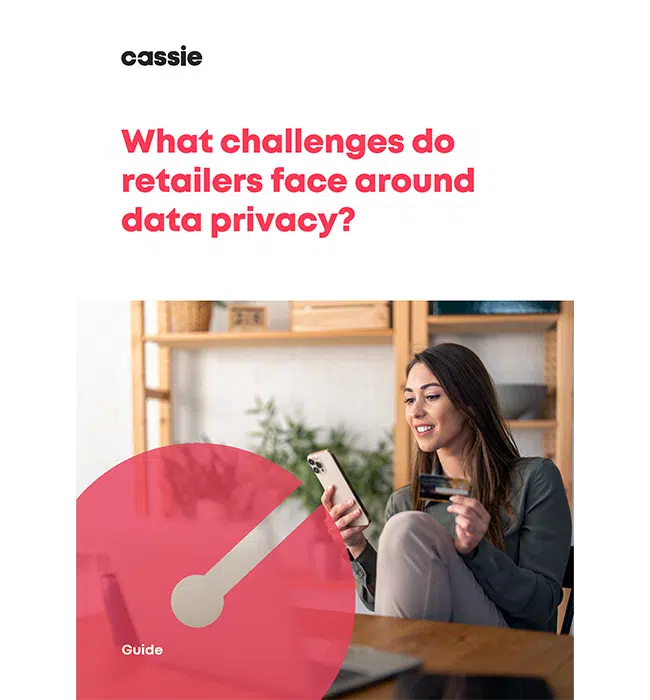Optimizing digital retail strategies with the power of customer preferences
Posted: January 14, 2024
In such a competitive market, retailers are constantly seeking advantages to increase revenue streams and drive engagement.
Technology has transformed the way we shop, with customers expecting more than just quality goods at affordable prices.
They want an omnichannel experience that caters to their convenience, accessibility, and personalization.
For this experience to work, customer preferences must be put at the heart of your strategy.
However, balancing the power of customer preferences with stringent data protection measures is a nuanced task – but imperative to ensuring both compliance and trust.
Understanding customer preferences
The first step in optimizing retail strategies is to understand your customer’s preferences.
It’s not just about knowing if they prefer a weekly newsletter to a monthly send. It’s about understanding all the different details that shape their entire experience. Far too often, personalization strategies are informed by analyzing data and inferring behavior.
Rather than guessing what your customers want, why not ask them?
By collecting as much of this first-party data as possible, brands can then build out more advanced personalized journeys that feel genuinely contextual and relevant.
Ultimately, there are unlimited preferences that brands can identify. For example, some can be based on contact preferences, like what time, topic or channel they prefer.
Others can be based on product preferences, such as what type of products they’re interested in, who they’re buying for, what their budgets are.
This kind of data can be collected in many ways – from customer surveys and progressive form fields or analyzing purchase behavior, to assessing the feedback received through customer support channels.
But the crux to this data is making sure that it’s collected compliantly.
The privacy risks of first-party data
With any data collection, businesses must be mindful of global data privacy legislation. First-party data is no different – in fact, it’s more important than ever to ensure consent is obtained so that you can utilize the data to its full potential.
Businesses must establish clear data usage policies, obtain explicit user consent, and conduct regular audits to ensure data is handled responsibly and ethically.
Transparency is equally pivotal to address the risk of users being unaware of how their data is collected, used, and shared.
Providing clear and comprehensible privacy policies, along with transparent communication about data practices, is essential, accompanied by user-friendly opt-in/opt-out mechanisms.
Our recent consumer survey found that 76% would like to see a clear explanation of who the company shares data with and that this would make them more likely to opt in to data sharing.
We’ve all been asked to opt in or out of something – usually marketing emails or cookie policies – without really knowing what we’re agreeing to.
As consent fatigue is growing, with consumers getting fed up of multiple requests even in one single journey, businesses need to make privacy a seamless part of the user experience so that they can compliantly gather data.
Transparency and user experience need to go hand-in-hand. By openly asking customers what they want, they’ll feel more respected because brands outline the purposes for data collection whilst simultaneously getting more relevant communications and content.
To effectively build out these experiences, brands need to adopt robust and scalable technology to support them.

What challenges do retailers face around data privacy?
Read our retailer’s guide to discover how you can embrace data privacy to win customer trust and in turn, drive revenue.
In this guide, you will learn:
- The business and brand implications of not enacting a good privacy strategy
- What privacy practices you should adopt to help consumers feel in control of their data
- What a Consent and Preference Management platform is and why it’s the answer to your problems
Embracing technology to power personalization
There are many different types of platforms that can collect this data – from your CRM to bolt-on platforms like survey tools and chatbots.
Generally, these tools can’t handle data at scale, nor do they integrate to cross-reference inputs. When using consent mechanisms within platforms that aren’t purpose-built to manage consent, you’ll find a lack of functionality and processing power to effectively support global brands working across geographical legislations.
The risk here comes with multiple systems collecting data silos, potentially leading to conflicts in what a user has consented to share as well as the types of preferences.
To overcome these disparate data silos, a consent management platform can provide a compliant means of centralizing all your consent data into one single source of truth.
The importance of Consent Management Platforms (CMPs)
Compliance with data protection regulations:
Data protection regulations mandate specific requirements when collecting and processing personal data, such as the General Data Protection Regulation (GDPR) requiring that businesses obtain explicit consent. A CMP helps ensure compliance by providing a bespoke mechanism for users to give informed consent.
Enhanced user trust:
A CMP builds trust with users by transparently communicating how their data will be used. When individuals have control over their data and are aware of how it will be utilized, they are more likely to trust the organization collecting the information.
Legal risk mitigation:
Obtaining clear and documented consent through a CMP helps mitigate legal risks. In case of audits or legal challenges, having a record of user consent demonstrates that the organization is committed to respecting privacy laws and can provide an accurate audit trail of every individual record.
Granular control over preferences:
Users often have different comfort levels regarding the use of their data. A CMP enables organizations to offer granular control, allowing users to choose the types of data they are comfortable sharing and the purposes for which it can be used.
Consent renewal and long-term management:
Consent is not a one-time event; it’s an ongoing process. A CMP facilitates the renewal of consent when necessary and provides tools for managing consent preferences over time, reflecting changes in regulations or user preferences.
Facilitating personalization responsibly:
When collecting first-party data for personalization, a CMP ensures that users are aware of how their data will be used to tailor experiences. This transparent approach helps organizations personalize services while respecting user preferences.
Introducing Cassie: The CMP built for enterprise brands
Cassie is an advanced consent management platform that centralizes consent across platforms, channels and devices so that you can communicate with end users across the entire lifecycle.
Put the consumer in control and communicate with them on their terms to optimize conversions, build trust and ensure compliance by default with personalized journeys powered by user-defined consent and preferences.
Cassie is more than just a cookie banner. With the death of third-party cookies and evolving privacy regulations, Cassie helps businesses prepare for the future of consent management with three highly advanced capabilities:
- Identity Service: Tackle browser privacy challenges by retaining the identity of returning visitors even when cookies are removed
- Progressive Profiling: Compliantly collect first-party data through pop up surveys to build anonymous profiles
- Cross-Domain Consent: Only ask website visitors to provide cookie preferences once and then share this consent across completely different domains


